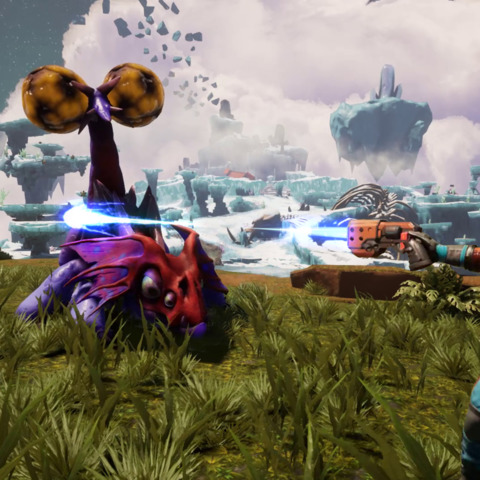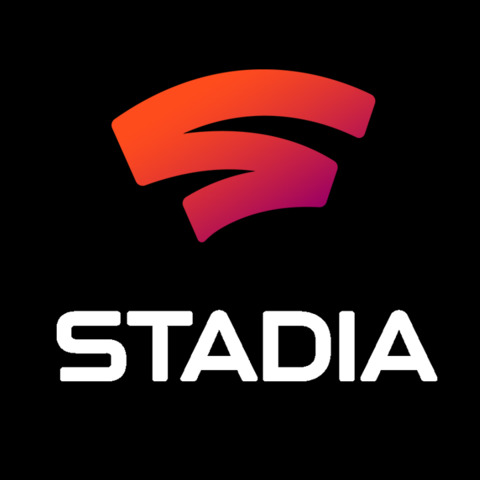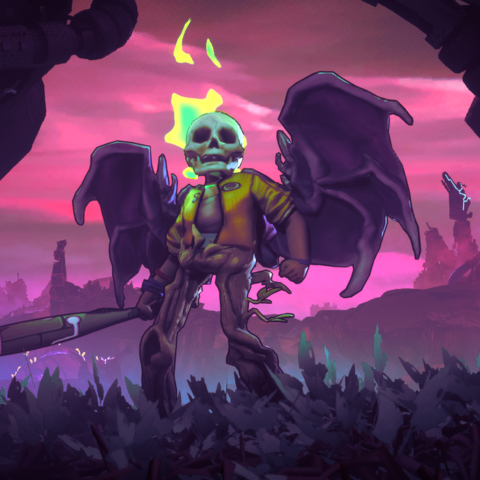[Update: While this has been one of the big concerns surrouding the service, Google insists latency wouldn't be an issue for Stadia. This claim came from Phil Harrison, who sat down with GameSpot to discuss a range of Stadia questions, including how we can expect the company to approach or deal with exclusive games, pricing, and data caps. Not long after Stadia's reveal, Apple announced its new foray into games with Apple Arcade. That service works like Xbox Game Pass and is not cloud-based, as Apple made it clear that--in an apparent nod toward Stadia concerns--its games can be played offline.] Original article follows.
Google Stadia, a cloud-based platform that streams games from a remote data center to nearly any device that can run Chrome, is designed to work on laptops, phones, tablets, PCs, Macs, Chromebooks, and TVs with Chromecast. All graphics processing is relegated to off-site hardware, so all you need is a strong internet connection. From a technological perspective it's an impressive concept, and we were eager to be one of the first to experience it on the GDC 2019 showroom floor. Both Assassin's Creed Odyssey and 2016's Doom were playable at the event, and though they ran and looked great, I couldn't help but notice one significant shortcoming.
Keep in mind, my hands-on time was at the Google stations on the GDC show floor, so your mileage may vary. There are a lot variables at play in addition to the internet connection, and these are early playable builds under unknown conditions. Display response time is another factor that we couldn't account for during the hands-on demo, and it's an important spec to consider, especially for a PC-like experience--these were not gaming-grade monitors at the demo stations.
Input lag was the worst offender during my time with Doom; this was readily apparent when swiping the mouse around to aim. The aiming reticule would trail behind my mouse movements ever so slightly, and for a game like Doom--a hyper-fast first-person shooter that relies on precision aiming--it can be a deal-breaker. Playing on a controller mitigated the emphasis on speed and precision and made input lag a little less of a factor, but it doesn't negate the issue altogether. Another thing to note is that Google staff told me the Doom demo in particular was running in a low-latency mode available on Stadia itself. From a fidelity standpoint, the game ran at a consistent frame-rate using medium-high settings with adequate overall image quality; artifacting (or compression) didn't affect the experience. However, it's a bit disappointing that input lag could hold this back from being the ideal way to play a game as fast as Doom.
I also got to revisit Assassin's Creed Odyssey with Stadia and it felt very similar to Google's early cloud-gaming beta that called Project Stream. Of course, Odyssey doesn't have the same emphasis on speed and accuracy as Doom, so naturally the experience translated better to the cloud-based platform. When peeking at some of the settings, the demo was running at 1080p, 60 FPS, with a 20 Mbps bit rate. The game had decent visual quality with some discernible artifacting, but we were playing up-close on large TVs which isn't a typical setup.
At launch, it'll be capable of delivering up to 4K resolution and 60 FPS thanks to a brand-new AMD GPU rated at 10.7 TFLOPs that powers the data center hardware--remember, the Xbox One X, currently the most powerful console to date, has 6.0 TFLOPs. Stadia will come with a whole roster of features in addition to the convenience of playing games over a powerful cloud-based platform.
Google will also offer its own controller for Stadia which has integrated Google Assistant, its voice-controlled AI technology--developers will be able to incorporate this capability into their games. Additionally, Stadia will have seamless streaming to YouTube with plenty of features change how people will able to jump into multiplayer games (Crowd Play), and share specific gameplay moments for other players to jump into (State Share).
Sclash - Console Release Date Trailer Kingdom Come: Deliverance 2 - Official Cinematic Announcement Trailer Stellar Blade - BIBI ‘Eve’ Official Music Video Trailer | PS5 Apex Legends: Urban Assault Collection Event Trailer Total War: WARHAMMER III - Elspeth von Draken Gameplay Showcase Genshin Impact - "Arlecchino: Sleep in Peace" | Official Character Teaser Minecraft – Kung Fu Panda DLC Trailer Potionomics: Masterwork Edition - Official Announcement Trailer Snowbreak: Containment Zone - "Gradient of Souls" Version Trailer Harold Halibut GameSpot Video Review Nancy Drew: Mystery of the Seven Keys | World Premiere Official Trailer Modern Warfare III & Warzone - Official Cheech & Chong Bundle Gameplay Trailer
Please enter your date of birth to view this video
By clicking 'enter', you agree to GameSpot's
Terms of Use and Privacy Policy
Google isn't the only one staking a claim in cloud-based gaming, however. Microsoft's Project xCloud, which also streams games from hardware at a data center to devices via an internet connection, will be having test runs later this year as well. For more on the game streaming landscape, be sure to read our quick rundown of all the gaming companies investing in cloud gaming and what they're offering.
If Google can improve key aspects, namely the apparent issues with input lag, Stadia would be a serious competitor in the gaming landscape. Otherwise, there may be limitations as to which games would work best on this new platform. Regardless, the accessibility that Google will offer is unprecedented. While cloud gaming itself is not new, the combination of accessibility and convenience could help this service to establish a foothold. We'll all be able to see for ourselves when Stadia launches sometime in 2019.





